x funckii Braun ex Koch, 1832
Parentage : S. arachnoideum x S. montanum x S. tectorum (according to IHSP, 2003)
Synonym : Sempervivum x montanum Mertens & Koch (1831) (nom. illeg.)
Distribution : Alps, Switzerland to Styria, but not native. The several apparently natural stations are stated to be all due to introduction.
Description (according to Praeger, An Account of the Sempervivum Group, 1932) :
Rosettes many, crowded, compact, flattish, open, 2.5 to 4 cm across, mostly wholly bright green save for a purplish tinge on tips of backs of old leaves. Offsets numerous, stellately arranged on stems 3 to 4 cm long.
Leaves crowded, obovate or obovate-lanceolate, shortly acuminate, slightly tapered below, 10 to 15 mm long, white at base, finely glandular-pubescent on face and back, convex both sides, ciliate with rather long translucent patent cilia of unequal length (the longest 1 mm), hairy but not tufted at apex.
Flowering stem about 20 cm long, glandular-hairy, clothed with erect oblong-ovate acute apiculate leaves about 2 cm long and 8 mm broad, finely glandular-pubescent on face and back, strongly ciliate on edges, scarcely tufted at tip.
Inflorescence trichotomous, compact, flattish, 6 to 8 cm across, branches 4 to 5 cm long, 6- to 7-flowered, densely glandular-pubescent with hairs of unequal length.
Flowers : Bud globular, hairy, flower 11- to 12- parted, 2 - 2.25 cm across, purple-rose with a darker eye, calyx 6 mm long, densely glandular-pubescent, cut half-way or more into ovate acute or apiculate segments, petals purplish-rose, 1 cm long, oblong-oblanceolate or obovate, somewhat acuminate, densely glandular-pubescent on back and edges, filaments purple, anthers yellow or orange.
Flowering time : July - August.
Note :
This hybrid is a well-known plant in gardens. It is characterized by its numerous wholly green dense rosettes of moderate size, with leaves glandular-hairy on both sides and conspicuously ciliate. The last character helps to distinguish it when not in flower from strong forms of montanum, which is obviously one of its parents. In bloom, the much shorter redder petals distinguish it at once from that species, in which the petals are very long and of a violet tinge. It cannot be mistaken for any form of its other two supposed parents.
The origin of this well-marked and well-known plant is obscure. Hayek’s hypothesis is to the effect that a natural cross (arachnoideum var. doellianum x montanum ssp. stiriacum), brought to a garden, hybridized there with a tectorum form. … There seems little doubt that this plant is a triple hybrid of the parentage suggested. Such hybrids may be not rare both in nature and in gardens, but they are very difficult to diagnose.
Many of the records for funckii refer to the widespread arachnoideum x montanum.
Named after Christian Heinrich Funck, apothecary, of Gefrees in Tirol.
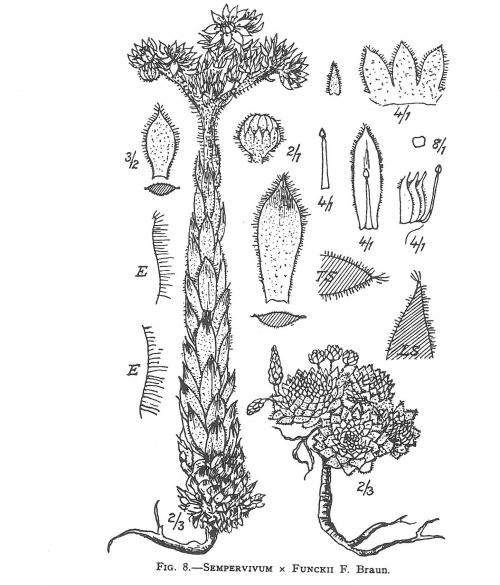
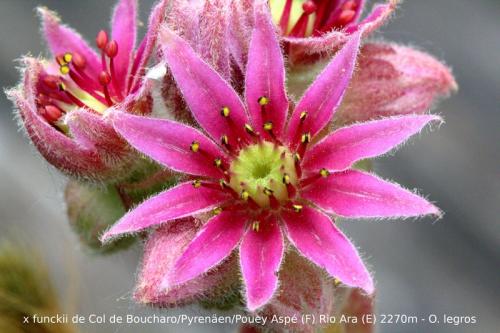
Photo Olivier Legros
S. x funckii at Bad Berneck, Germany
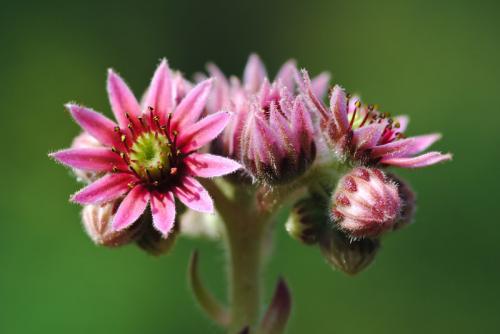
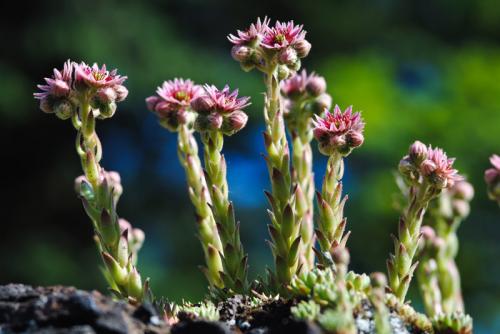
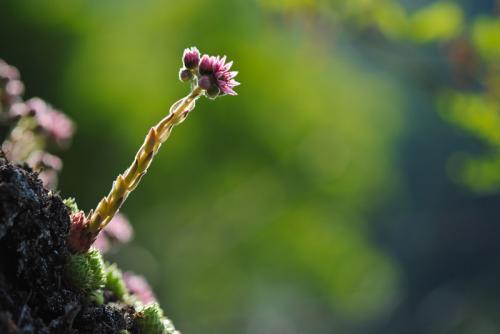
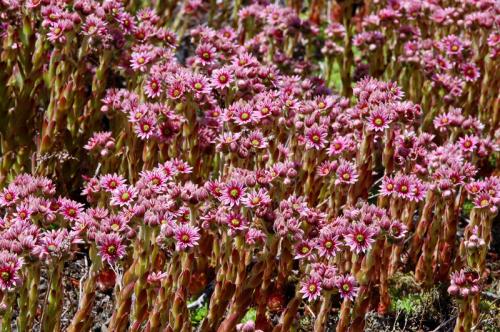
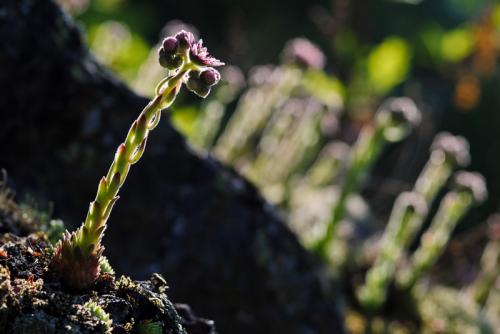
Photos Florian Fraass
To see more photos : Die Funcks-Hauswurz (Sempervivum x funkii) in Bad Berneck, von Florian Fraass.